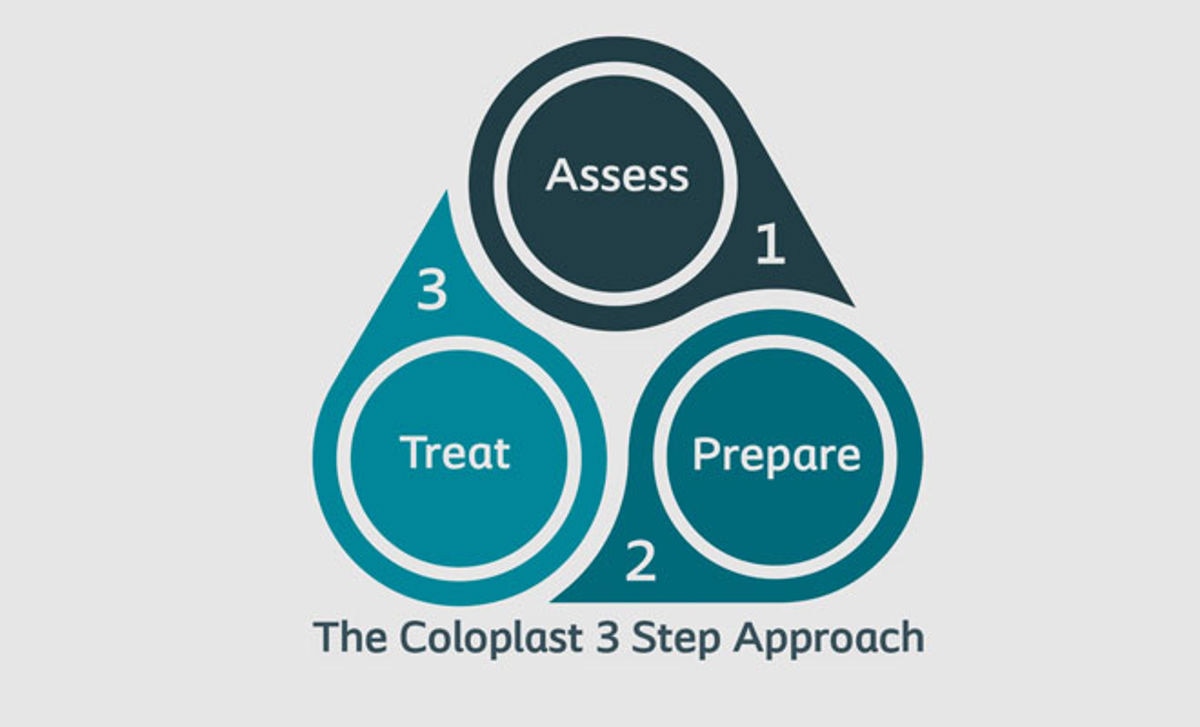Get full access with a free account
Benefits of the Coloplast® Professional Educational platform
- Full access to educational content, events and resources
- Track your progress
- Share content with your colleagues
- Share supporting material with your patient

The Coloplast 3 Step Approach - Assess, Prepare and Treat
1. Assessment is paramount in defining treatment objectives.
2. Wound preparation should be routine and regular. Removing the barriers that may delay wound healing is a crucial step in wound care1-3.
3. In an international consensus amongst wound care specialists 83% agreed that when treating wounds the best dressing choice for wounds up to 2cm deep is a dressing that conforms to the wound bed9
Alprep® Pad.
|
Simplifying cleansing and debridement to support optimal wound preparation
Simplifying wound preparation
Using Alprep® Pad as part of an holistic approach supports all elements of the Coloplast 3 Step Approach, Assess, Prepare and Treat5. Empowering clinicians to perform wound preparation by learning skills and ensuring they have access to appropriate resources, is an opportunity to improve quality of care and cost-effectiveness in a changing NHS6.
Alprep Pad is a two-in-one cleansing and debridement tool designed for improved absorption and ease of use, to support wound preparation. Alprep Pad is suitable for a wide variety of wounds including non-infected wounds, infected wounds or wounds with suspected biofilm.
Wound preparation should be routine and regular. Removing the barriers that may delay wound healing is a crucial step in wound care1-3:
- Allowing wound assessment
- Reducing risk of infection
- Promoting development of healthy tissue
The more frequent the debridement sessions, the better the wound healing4,10.
Biatain Silicone
|
Biatain® Silicone with 3DFit Technology conforms up to 2cm in depth* and facilitates supported shared care
* conformability may vary across product design
Avoidance in filler dressings
Biatain® Silicone with 3DFit Technology conforms up to 2cm in depth*. Through a case series in Ireland7 and data from PROVIDE8, Coloplast have demonstrated an avoidance in filler dressings when using Biatain Silicone on wounds up to 2cm in depth.
With conventional foam dressings a gap can form between the wound bed and the dressing. Gaps allow for exudate pooling. Pools of exudate promote bacterial growth leading to the risk of infection. If exudate leaks onto the wound edges and periwound skin, they can become macerated and may delay wound healing. Biatain® Silicone is designed to reduce exudate pooling and thereby the risk of infection and maceration of the wound edge and periwound skin.
When treating wounds, wound experts agree the keys to optimal exudate management.
- 96% agreed that effective exudate management is the best way to promote an optimal healing environment for both acute and chronic wounds9
- 98% agreed that managing the gap/dead space is important or very important for effective wound healing9
- 83% agreed that the best dressing choice for wounds up to 2cm deep is a dressing that conforms to the wound bed9
- Nearly 80% of wounds are less than 2cm in depth11.
